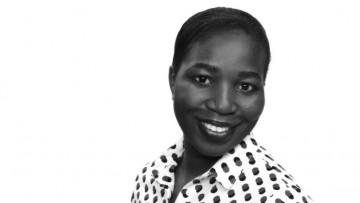Cynthia Söderbacka: ”Using organic residues as raw materials for fossil-carbon alternatives”

Kolumnen har publicerats i Vaasa Insider 23.5.2025.
The writer Cynthia Söderbacka works as Project Leader at Novia UAS.
Carbon is the core of life on earth and keeps the system in balance, be it earth’s temperature regulation, food for organisms and the list goes on. The rapidly growing global population and high dependency on natural resources has resulted in increased greenhouse gases on our planet. The increased greenhouse gas emissions have thrown our planet into an imbalance known as climate change, and the interest in finding alternative materials to replace fossil ones has grown.
With the green transition and geographical challenges in obtaining certain natural resources, research, development and innovation in alternative solutions is peaking. One emerging technology of interest is the pyrolysis of organic material, mimicking the natural formation of coal to produce carbon-rich materials known as biochar (BC) or activated carbon (AC) depending on the process followed in hours.
Project investigates new use of biomass residues
In the project Organic Residues as a Raw Material for Water Cleaning & Energy Storage funded by Interreg Aurora, Novia UAS has partnered with three Swedish organisations: Swedish University for Agricultural Sciences (SLU-lead partner), Luleå University of Technology (LTU) and BioFuel Region.
The project aims at investigating and identifying suitable biomass residues that can be used to produce fossil carbon alternatives for use in electrochemical energy storage devices, water cleaning filters and additives in biogas production.
To promote responsible consumption, the feedstocks that are not suitable for biogas are made into biochar/activated carbon. However, those that are good feedstock for biogas are first used to produce biogas and the remaining solid residue (digestate) made into biochar/activated carbon.

Figure 1. Summary of the project’s objectives.
The three project actors combine their expertise to achieve the set objectives, with BioFuel Region handling the project’s communications activities. SLU is the main producer of the biochar/activated carbon using pyrolysis, which is then distributed, as shown in Figure 1.
Figure 2 shows the stages and pathways for BC and AC production and a sample electrode material made from AC.

Figure 2. Stages to biochar/activated carbon production from pine tree bark and electrode material production.
Three different routes
For use as water filters, LTU is leading Route 1 on the investigation of heavy metal removal from wastewater and filter regeneration. It is expensive to produce activated carbon, so being able to reuse it would improve its lifespan and lower total costs. Route 2 is led by SLU, who produce electrode material for batteries, as can be seen above in Figure 2.
In Route 3, Novia UAS has been using biochar and activated in biomethane potential tests for anaerobic digestion to investigate the impact using the AMPTS II machine. According to literature sources, these additives have been reported to improve the methane yield, speed up the biogas production start-up, heavy metal and sulfur hydroxide removal. The feedstocks tested so far are algae, sewage sludge, saw dust and animal manure/straw mix. Cellulose is used as a reference and always has a higher methane yield than most biomasses.
Findings from the tests carried out at Novia UAS are that AC does speed up the start-up process and may improve methane yields, but caution must be taken with concentrations.

Figure 3. Impact on methane yield and reaction start-up on sewage sludge and saw dust.
Our studies show that not every biomass (i.e sawdust) is suitable for biogas production, and this can be used as primary waste for BC/AC production. Furthermore, not every feedstock will behave the same way. BC and AC additives may have sped up the reaction start up for sewage sludge but the sewage sludge without additives produced more methane.
Could it be that the contaminants in sewage sludge reacted with the BC and AC and affected the microbes that produce methane, or was it the concentration percentages? More investigations need to be carried out to reach a viable conclusion.
In conclusion, this project contributes to building sustainable futures by promoting the use of local materials that would otherwise be considered as waste, to produce high demand materials that would support the energy, wastewater treatment and waste management sectors.
Acknowledgements to the project team and contacts for further info:
Novia UAS: Cynthia Söderbacka (cynthia.soderbacka@novia.fi)
SLU: Alejandro Grimm (alejandro.grimm@slu.se)
LTU: Sarah Conrad (sarah.conrad@lut.se)

